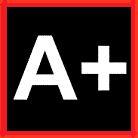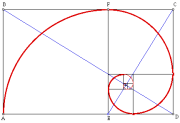IE 7, and understanding “security zones”
In an effort to mitigate and alleviate its reputation for ‘being full of holes’ (that’s geek-speak for ‘not secure’), Microsoft has released a “new” version of Internet Explorer and added it to its Update process to make sure you are using it. There are some “new” features, such as tabbed browsing and an anti-phishing tool, and also new measures and settings designed to close those security ‘holes’ I mentioned. As you may have noticed, it also has a snazzier icon.
As you may have also noticed, with IE 7 a lot more of those annoying security warnings pop open, asking you if you’re really sure you want to open your email Inbox, and telling you that you’ve just “navigated away” from one page and opened another (that’s kind of what people do on the Internet, isn’t it? I mean, it is called “browsing” and not “stare at one, and only one, page”… Ahem. Sorry.) and all sorts of other warnings that, while they may (debatable) make us smarter/safer browsers, really accomplish nothing but to irk. It often causes log on issues, because it is now set to deny all cookies by default, as well. I am all for security, but there’s got to be a better way than being conditioned, like Pavlov’s dogs, to clicking “OK”. Fortunately there is.
Tip of the day: regain control over IE by using and understanding its “Security Zones” and “Trusted Sites” feature. [This tip can be applied to older versions of IE as well.] To get started, locate the grey ‘gear’ icon/Tools menu which should be in the upper right. If you cannot find it, right-click on any grey (open) area and select Menu bar. Now click on Tools and select the bottom choice–Internet Options. Click on the Security tab.

As you can see, IE views what your PC can browse to in terms of four levels of security: Internet (the default), intranet, Trusted sites, and Restricted sites. The second “level”, intranet, is for internal corporate networks (administered by the IT dept.) and is irrelevent to our discussion. We are focusing on the other three:
- Internet: (Default) The vast unknown and scary world wide web. Because we may have no idea who has posted the website, we could conceivably stumble upon a malware downloader or some other kind of poisoned site, so browser settings for this zone are quite restricted (at least in IE 7 they are) and many features are disabled.
- Trusted sites: (Manually entered) These are websites that we tell IE are safe. Features and settings are opened up and turned back on (such as log on cookies) so that we can fully interact with the site’s offerings.
- Restricted sites:(Preloaded/manually entered) These are sites that IE simply will not go to. Microsoft has pre-loaded a list of well-known sites and domains that contain malware and booby-traps; while this is far from a complete list — the arena of such sites is always changing — it is nice to know that an effort is being made to keep us away from known hazards. For parents: by adding xxx sites to this list (use ‘wildcards’), you can keep Junior away from at least some of the world of smut. You may want to consider adding My Space here too. Though, if your kids’ User Accounts are administrator-privilege, or they use your Account, they can go in and remove whatever you’ve added.
So now that we know that IE treats every website we visit as an unknown and potentially dangerous place (or won’t let us go there at all) and therefore has all the ‘bells and whistles’ turned off, it’s time to tell it which sites we trust. Webites you trust would be your e-mailbox, your ISP’s homepage, your bank, your eBay log on page, and those sites you visit regularly and know to be harmless. Add these sites to the Trusted zone by clicking on the green checkmark in the Zones box.

Now click on the Sites button.

Here I am adding my blog to my list of safe sites. It is important to uncheck the checkbox “Require server verification (https:) for all sites in this zone:” which requires a different Internet protocol and would prevent us from adding ‘normal’ websites. You can type in the website(s) manually in the “Add this site…” box, and if you want to add a whole list in one fell swoop, just separate the site names with commas; or, you can browse to the site and double-click on the globe icon in the bottom bar of IE (rt-hand side) and the Security window will open and the site name will be automatically filled in. Now click the “Add” button.
Any site in the Trusted sites zone will have cookies enabled for easier log on, and IE will behave just like it did in the Good Old Days of the Internet — the days before viruses and trojan horses and keyloggers and out-right bandits and thieves.
Update 7/21/07: I have posted more IE7 answers in a more recent post. To view it click here.
Today’s free link: If you enjoy reading my daily how to articles, you will also enjoy How Stuff Works From website: “HowStuffWorks explains hundreds of subjects, from car engines to lock-picking to ESP, using clear language and tons of illustrations.”
Copyright © 2007 Tech Paul. All rights reserved.

 Subscribe to Tech--for Everyone by Email
Subscribe to Tech--for Everyone by Email












Would you be so kind to give me a plain definition for what security zones are used for in IE 7.
Thank You
Joel LaRocco
LikeLike
Mr. LaRocco,
I will ask you to refer back to the article, starting roughly at the bullet points.
For “the average computer user”, you would primarily only use the Zones to mark certain website as “trusted” (“safe”) and allow a lower security stance on those — such as your bank, or webmail Inbox — where you don’t mind the cookies.
Additionally, parents can use the “danger” option to block access to what ever sites they choose not to have their children visit.
LikeLike